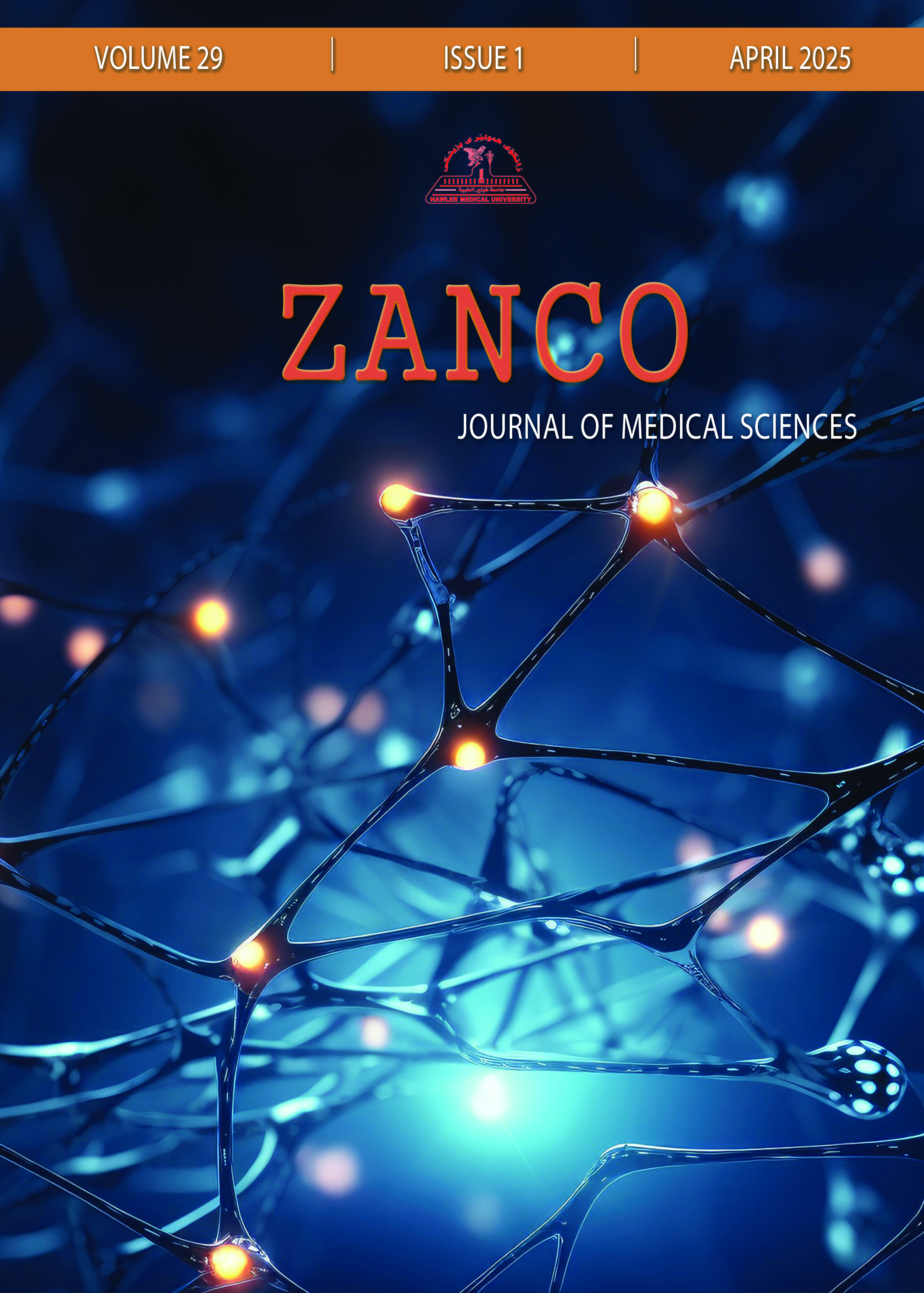Copyright (c) 2025 Asia Rasul Bayez Hamkol, Ishraq Mahmood Shakir (Author)

This work is licensed under a Creative Commons Attribution-NonCommercial-ShareAlike 4.0 International License.
- Articles
- Submited: July 26, 2022
-
Published: April 23, 2025
Abstract
Background and objective: Polycystic ovarian syndrome (PCOS) is a common endocrinological pathology affecting around 15-20 % women of reproductive age globally. The characteristic features of PCOS are hyperandrogenemia, oligo/anovulation and polycystic ovaries on imaging studies. Serum insulin level is one of the major risk factors. The aim of this study was to show the significance of the insulin level in all phenotypes of the PCOS.
Methods: This cross-sectional study was carried out in the Kurdistan Region of Iraq at the Erbil Maternity Teaching Hospital. It comprised 101 women who had been unequivocally diagnosed with PCOS by laboratory and imaging studies throughout a one-year period beginning on May 2021.
Results: The women's body mass index ranged from 19 to 35, while their ages ranged from 18 to 49.Phenotype A formed the largest group of patients by 39.6% and phenotype D were the smallest group by 14.9% of the total patients with significant difference in the serum insulin level between different phenotypes by P-value of (0.035). The mean insulin sensitivity in all phenotypes of PCOS were 31.05 with significance of high serum insulin level by P-value of 0.003.
Conclusion: The current study found out that high serum insulin level plays a major role in the development of PCOS.
Keywords: Polycystic ovarian syndrome; Hyperandrogenism; Oligo/anovulation; Reproductive age; Body mass index.
Metrics
References
- Azziz R, Carmina E, Chen Z, Dunaif A, Laven JS, Legro RS, et al. Polycystic ovary syndrome. Nat Rev Dis Primers. 2016; 2:16057. DOI: 10.1038/nrdp.2016.57.
- Marshal JC, McCartney CR. Polycystic ovary syndrome. NEJM. 2016; 371:54-62. DOI: 10.1056/NEJMcp1513916.
- Teede HJ, Misso ML, Deeks AA. Assessment and management of polycystic ovary syndrome: summary of an evidence-based guideline. Med J Aust. 2011; 195:65–112. DOI:10.5694/mja11.10915
- Abarca-Gómez L, Abdeen ZA, Hamid ZA, Abu-Rmeileh NM, Acosta-Cazares B, Acuin C, et al. Worldwide trends in body-mass index, underweight, overweight, and obesity from 1975 to 2016: a pooled analysis of 2416 population-based measurement studies in 128.9 million children, adolescents, and adults. Lancet. 2021; 390(10113):2627-42.
- Teede H, Misso ML, Costello MF, Dokras A, Laven J, Moran L, et al. Recommendations from the international evidence-based guideline for the assessment and management of polycystic ovary syndrome. Hum Reprod. 2018; 33(9):1602-18. doi: 10.1093/humrep/dey256.
- Bedinger DH, Adams SH. Metabolic anabolic and mitogenic insulin responses: tissue-specific perspective for insulin activators. Mol Cell Endocrinol. 2016; 415:143-56. DOI:10.1016/j.mce.2015.08.013. Epub 2015.
- Vargatu I. Williams text book of endocrinology. Acta Endocrinol (Buchar). 2016; 122(1):113. DOI: 10.4183/aeb.2016.113.
- BerneC, Bergh T, Chase C, Litherl H, Holte J. Restored insulin sensitivity but persistently increased early insulin secretion after weight loss in obese women with PCOS. J Clin Endocr. 2015; 80:2586-93. DOI: 10.1210/jcem.80.9.7673399.
- Diamanti-Kandarakis E, PatarakisTS.Aspects of cardio metabolic risks in women with polycystic ovary syndrome. Current Obesity Reports. 2014; 3:377-6. DOI: 10.1007/s13679-014-0127-6.
- BilE,Dilbaz B, Cirik DA, Ozelci R, Ozkaya E, DilbazS.Metabolic syndrome and metabolic risk profile according to polycystic ovary syndrome phenotype. J Obstet Gynaecol. 2016; 42:837-43. DOI: 10.1111/jog.12985. Epub 2016 Apr 13.
- Guastella E, Longo RA, Carmina E. Clinical and endocrine characteristics of the main polycystic ovary syndrome phenotypes. Fertil Steril. 2010; 94:2197–213. doi: 10.1016/j.fertnstert.2010.02.014. Epub 2010 Mar 19.
- Lim SS, Davies MJ, Norman RJ, Moran LJ, Overweight, obesity and central obesity in women with polycystic ovary syndrome: a systematic review and meta-analysis. Human Reproduction Update. 2012; (18):618-37. DOI: 10.1093/humupd/dms030
- Moghetti P, Tosi F, Bonin C, Di Sarra D, Fiers T, Kaufman JM, et al.Divergences in insulin resistance between the different phenotypes of the polycystic ovary syndrome.J Clin Endocrinol Metab .2013; 98:628-37. DOI: 10.1210/jc.2012-3908.
- Kusisto J, Laakso M. Insulin resistance and hyperglycemia in cardiovascular disease development. Nature Reviews Endocrinology. 2014; 10:293-302 DOI: 10.1038/nrendo.2014.29. Epub 2014 Mar 25.
- Pivonello C, Nardone A, Muscogiuri , Garifalos F, Provvisiero DP, Verde N, et al. Insulin resistance and polycytic ovary syndrome. Nutrients. 2020; 12(8):2296.





